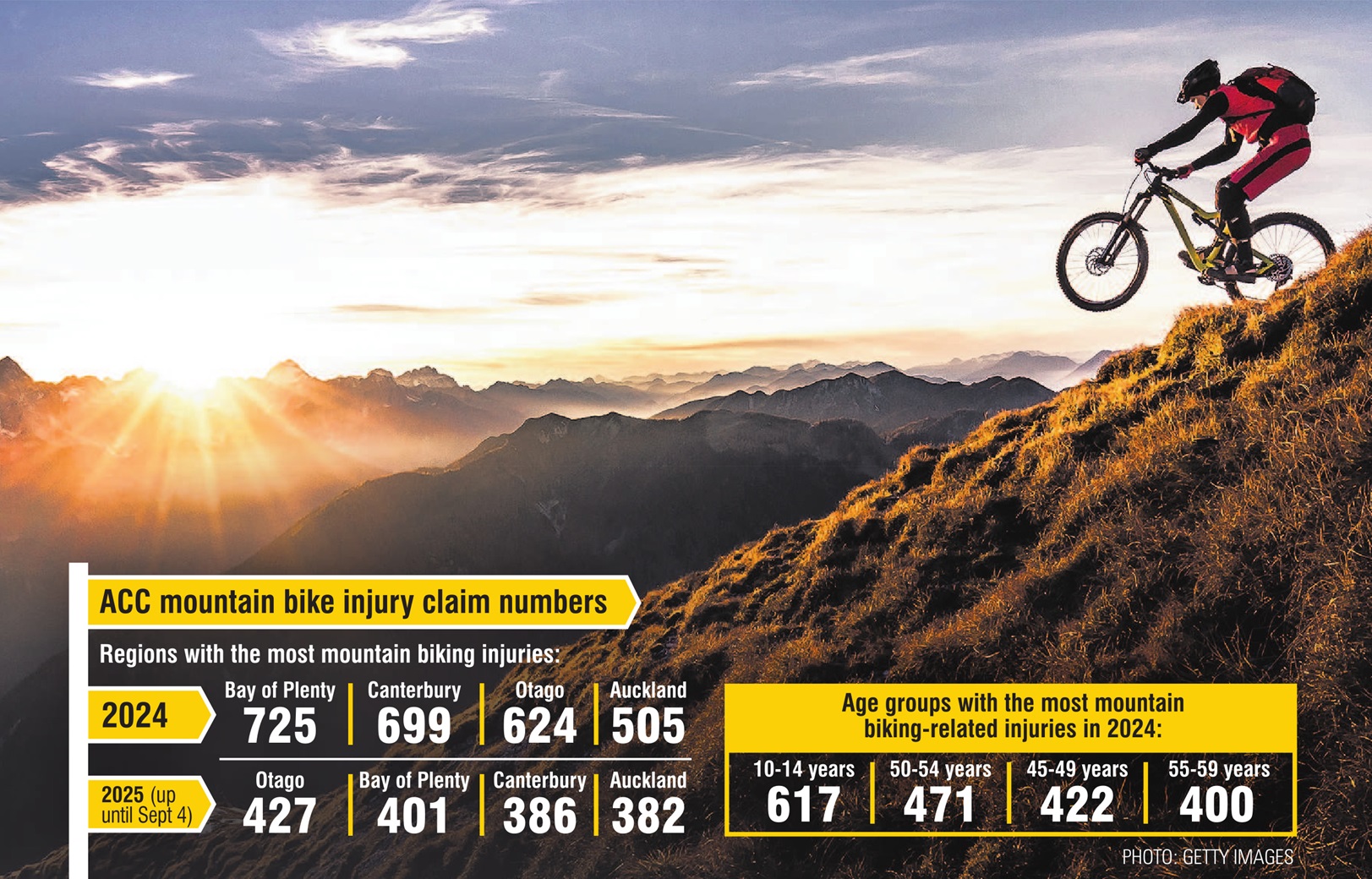
They have soared to the top of the table in terms of Accident Compensation Corporation (ACC) claims for mountain biking-related injuries so far this year, and Otago is the only region in the country where mountain biking injuries have increased over the past five years.
ACC national data shows the number of overall active claims has decreased, from 7233 in 2020, to 5603 in 2024, which cost $22.2 million to help people recover.
But in Otago, the number of new injuries marginally increased, from 617 in 2020, to 624 in 2024.
In 2024 alone, Otago had the third-highest number, behind Canterbury (699) and the Bay of Plenty (725).
And already this year (up until September 4), Otago is leading the way with 427 mountain biking-related injury claims — ahead of Bay of Plenty (401) and Canterbury (386).
ACC injury prevention spokeswoman Kirsten Malpas said when it came to mountain bike trails, there was a range of different challenges, and the degree of challenge was usually identified by how the trail was graded.
However, those gradings were not always consistent across the country, and had contributed to the number of injuries.
"With more riders enjoying the growing network of incredible trails across Aotearoa, consistent signage is essential in helping riders understand what lies ahead and choose trails that match their skill level," she said.
"Injuries, especially serious ones, can have a major impact on people’s lives.

ACC was supporting the New Zealand Mountain Trail Design Guidelines project, which aimed to bring all mountain bike trails into alignment, she said.
The project was being done in collaboration with Recreation Aotearoa, the Department of Conservation, Ngā Haerenga New Zealand Cycle Trails and Sport NZ.
Guidelines project manager Jonathan Kennett said the update to the guidelines provided clear, practical advice for everyone involved in designing, building, managing and auditing mountain bike trails.
The number associated with a track indicated how challenging it was, from one being very easy, to six being extreme, he said.
"After consultation with experts in the mountain bike community, it became clear that some of the challenges were not aligned with the grade of the track.
"There are certain structures that are built sometimes, like narrow boardwalks or seesaws for people to ride over, which can increase the risk or challenge.
"A realignment of the criteria for different grades was needed, so the challenge and skill required for the mountain bike track was equal to its graded difficulty."
Mr Kennett hoped the updated guidelines would contribute to a reduction in the number of serious injuries on mountain bike trails around New Zealand.











